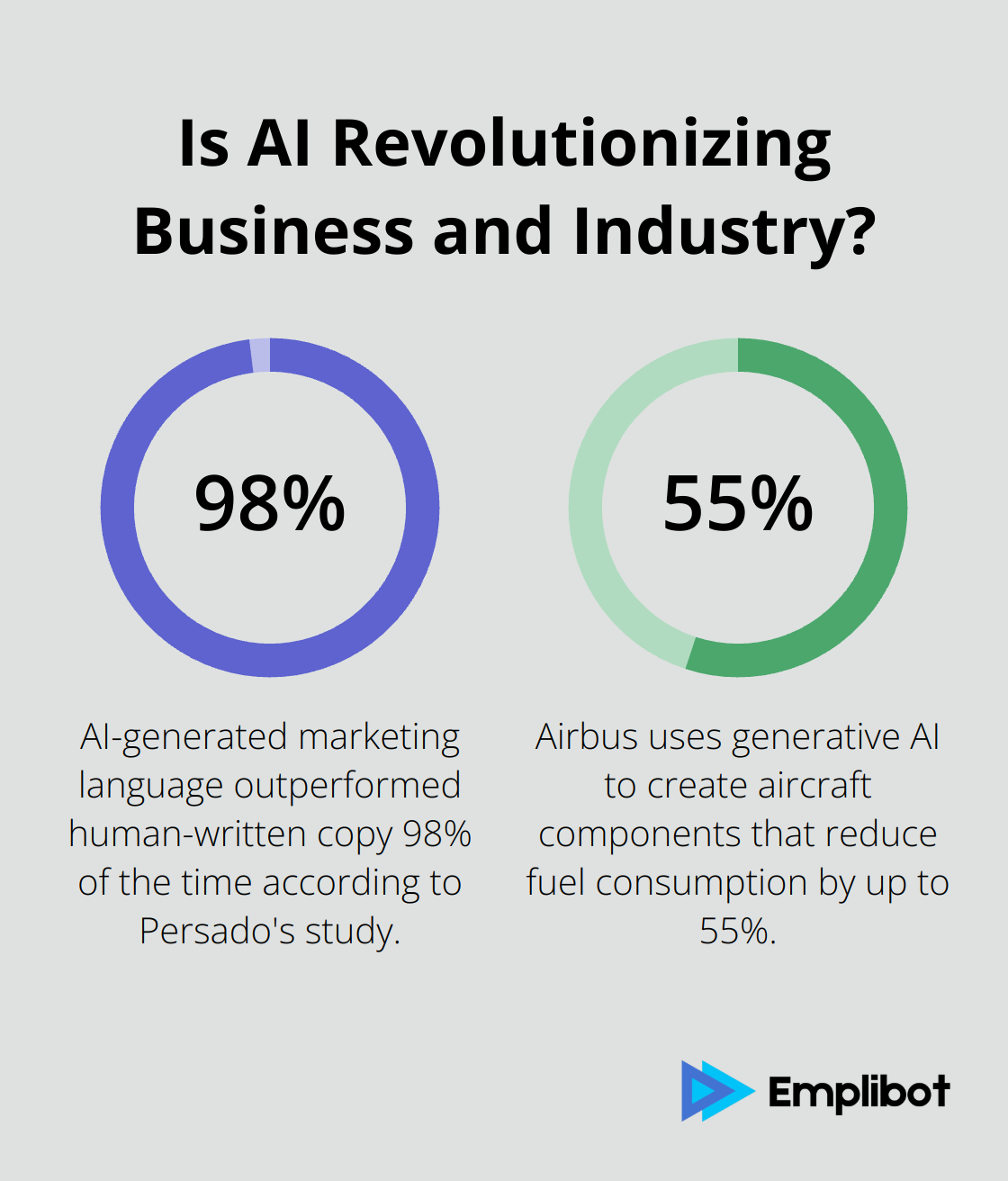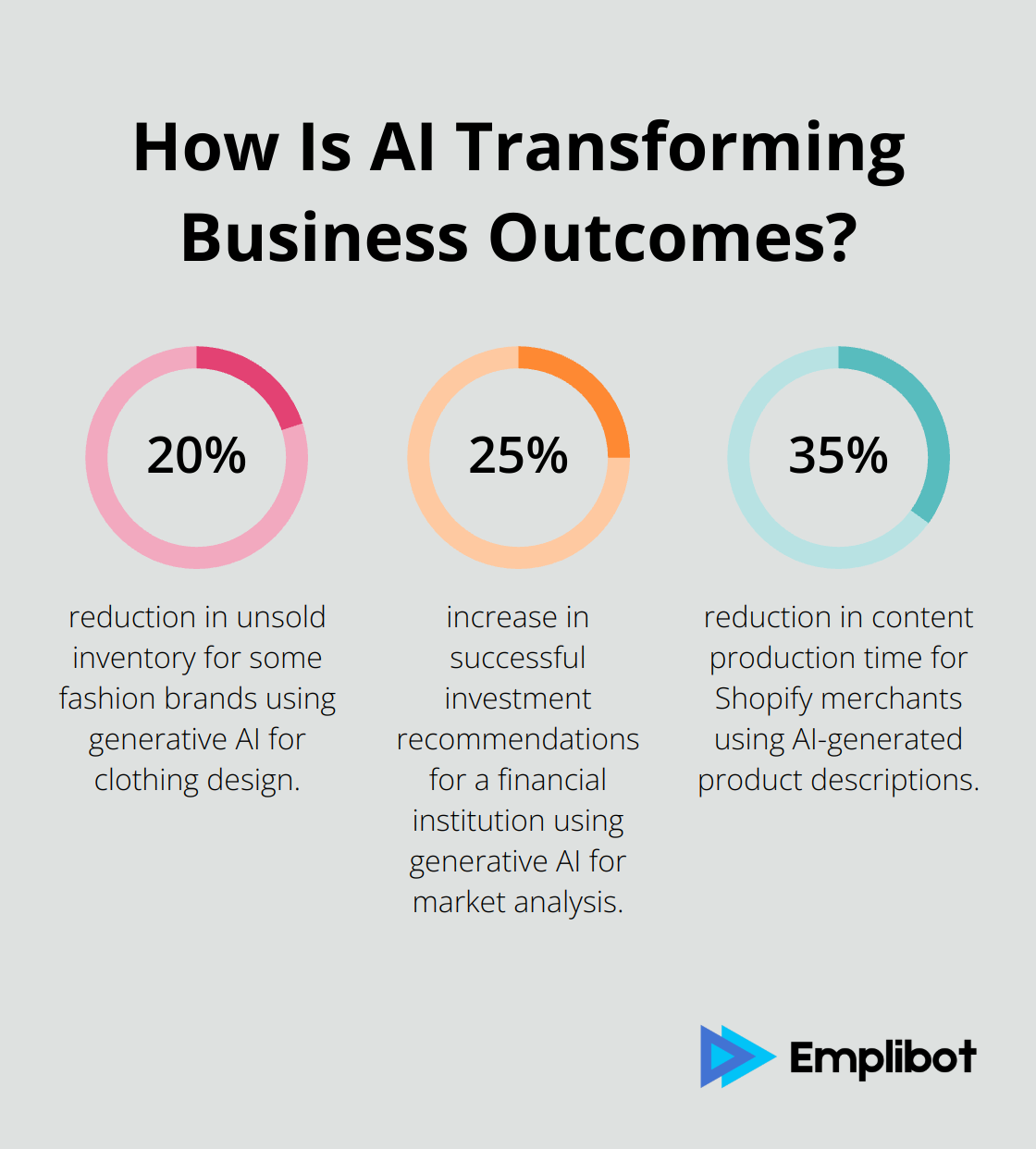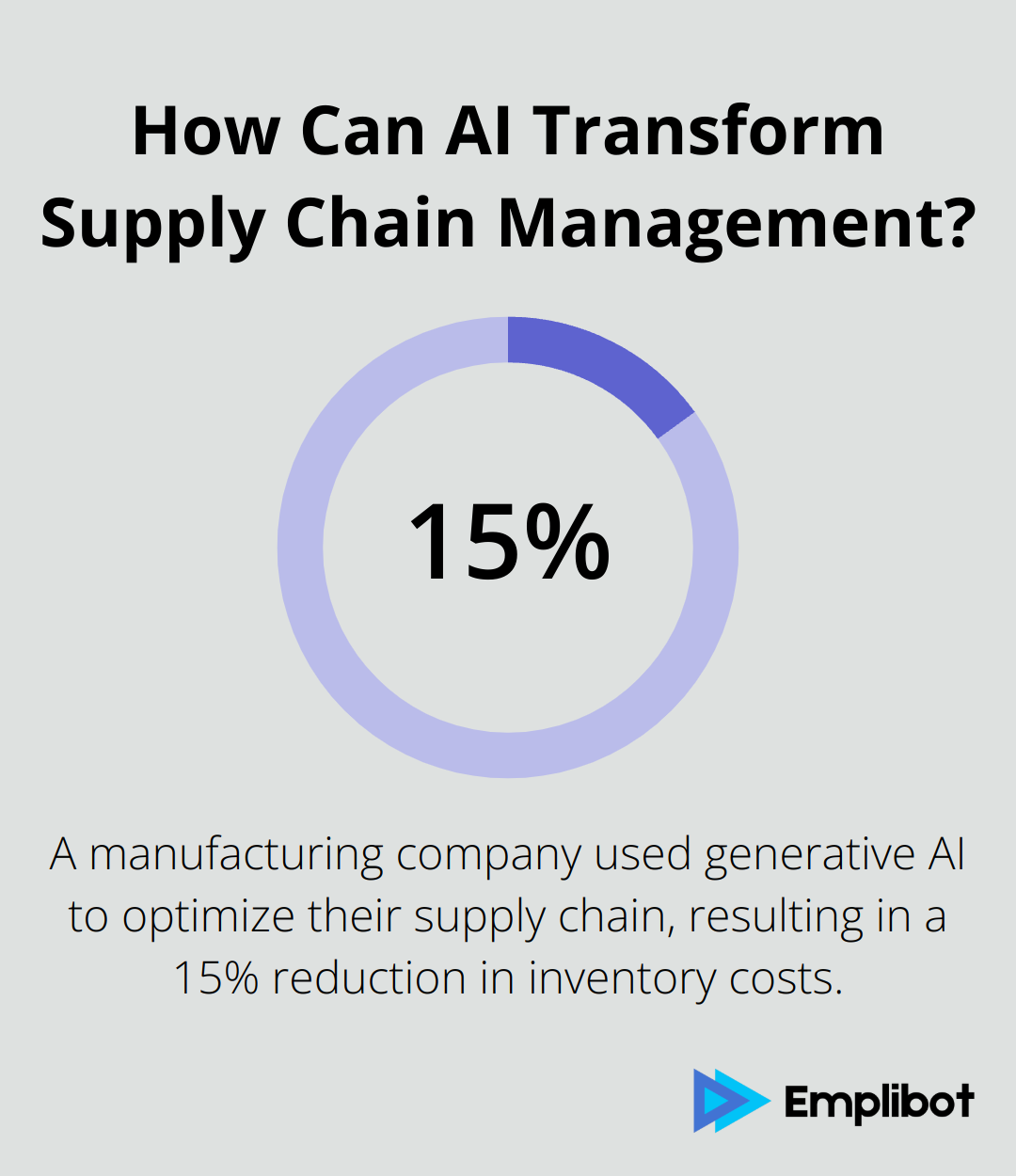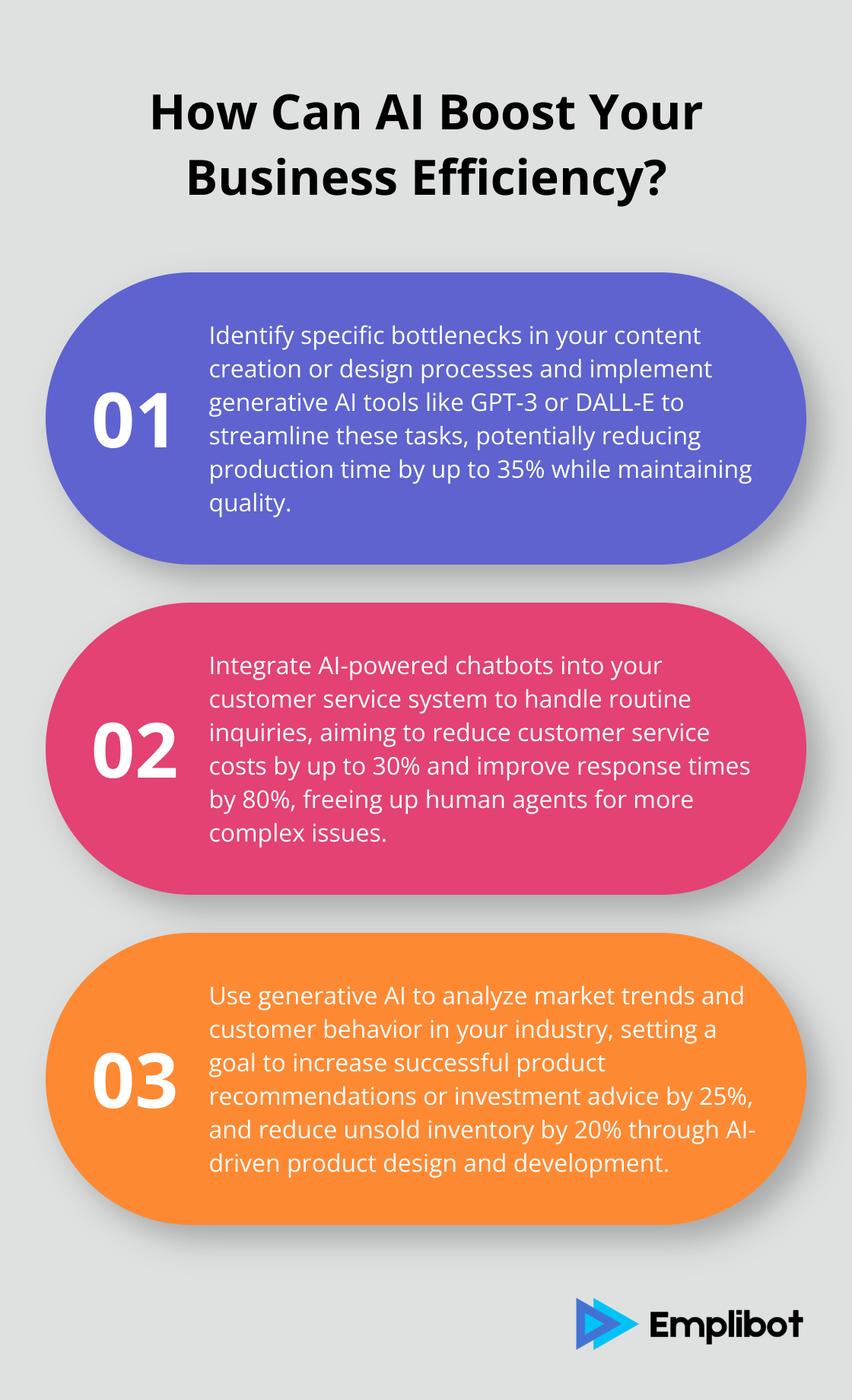Generative AI is revolutionizing the business landscape, offering unprecedented opportunities for innovation and growth. At Emplibot, we’ve seen firsthand how this technology is transforming industries across the board.
For business leaders looking to harness the power of generative AI, understanding its potential applications and implementation strategies is essential. This post will guide you through leveraging generative AI to drive success in your organization.
Contents
ToggleWhat Is Generative AI?
Generative AI revolutionizes business operations. This technology creates new content, including text, images, and code. Unlike traditional AI systems that analyze existing data, generative AI produces original outputs.
The Technology Powering Generative AI
Large language models (LLMs) and neural networks form the backbone of generative AI. These sophisticated systems train on massive datasets, enabling them to recognize patterns and generate human-like responses. GPT-3, a leading LLM, trained on an impressive 45 terabytes of text data.
Distinguishing Generative AI from Traditional AI
The primary distinction between generative and traditional AI lies in their outputs. Traditional AI excels at classification and prediction tasks, while generative AI creates new content from scratch. This capability unlocks numerous opportunities for businesses, from content creation automation to innovative product design development.
Real-World Business Applications
Generative AI impacts various industries significantly. In marketing, it creates personalized content at scale. Persado’s study revealed that AI-generated marketing language outperformed human-written copy 98% of the time. In product design, Airbus uses generative AI to create aircraft components that are lighter and stronger, reducing fuel consumption by up to 55%.
Implementation Strategies
Businesses aiming to implement generative AI should develop a clear strategy. Identify areas where content creation or design processes create bottlenecks, and consider how generative AI could streamline these tasks. While generative AI produces impressive results, human oversight remains necessary to ensure quality and brand alignment.

As we explore generative AI’s potential further, its role in shaping future business operations and innovation becomes increasingly evident. The next section will delve into specific applications of generative AI across various business functions, showcasing its versatility and transformative power.
How Generative AI Transforms Your Business
Revolutionizes Content Creation and Marketing
Generative AI transforms content marketing. Shopify merchants using AI-generated product descriptions report a 35% reduction in content production time while maintaining SEO performance. This technology creates personalized content for different audience segments, which improves engagement and conversion rates.

A retail company used generative AI to create product descriptions for their e-commerce site. The AI-generated descriptions increased click-through rates by 30% and boosted sales by 15%. This demonstrates generative AI’s potential to streamline content creation and directly impact bottom-line results.
Innovates Product Design and Development
Generative AI transforms product design and development processes. It generates numerous design iterations based on specific parameters, which helps companies explore innovative solutions faster. Airbus uses generative AI to create aircraft components that are approximately 55% lighter than traditional designs, which could lead to significant fuel savings.
In the fashion industry, generative AI creates new clothing designs based on current trends and historical sales data. This approach has reduced unsold inventory by 20% for some brands, which showcases how AI can align product development with market demands more effectively.
Elevates Customer Service and Support
Generative AI redefines customer service by providing instant, personalized responses to customer inquiries. AI-powered chatbots handle a wide range of customer queries, which frees up human agents to focus on more complex issues. IBM found that businesses using AI chatbots reduced customer service costs by up to 30% while improving response times by 80%.
Moreover, generative AI analyzes customer interactions to identify common issues and suggest improvements to products or services. This proactive approach to customer service significantly enhances customer satisfaction and loyalty.
Optimizes Data Analysis and Decision-Making
Generative AI excels at processing and analyzing vast amounts of data, which provides valuable insights for decision-making. It can identify patterns and trends that humans might miss, which leads to more informed business strategies. For example, a financial institution used generative AI to analyze market trends and customer behavior, which resulted in a 25% increase in successful investment recommendations.
The technology also enhances predictive analytics, which allows businesses to anticipate market changes and customer needs more accurately. This predictive power enables companies to stay ahead of the competition and adapt their strategies proactively.
As we explore the implementation of generative AI in organizations, it’s important to consider how to effectively integrate this technology into existing business processes and workflows.
How Do You Implement Generative AI?
Implementing generative AI in your organization requires a strategic approach. Many businesses have successfully integrated this technology, and key steps for successful implementation have emerged.
Identify Your AI Opportunities
Start by pinpointing areas where generative AI can make the biggest impact. Analyze your current processes to find bottlenecks or tasks that consume significant time and resources. A marketing team spending hours crafting social media posts could benefit from AI-generated content.

Look beyond obvious applications. Consider how generative AI might transform your product development, customer service, or data analysis processes. A manufacturing company used generative AI to optimize their supply chain, resulting in a 15% reduction in inventory costs.
Select the Right AI Tools
Choosing the right generative AI tools is essential. Evaluate options based on your specific needs, budget, and technical capabilities. Popular platforms like OpenAI’s GPT-3 offer powerful language generation capabilities, while tools like DALL-E excel in image creation.
For businesses seeking a comprehensive solution, Emplibot stands out. It combines generative AI capabilities with automated content distribution, making it ideal for companies wanting to streamline their content marketing efforts.
Prioritize tools with robust APIs and integration capabilities (this ensures seamless incorporation into your existing workflows). MIT Sloan Management Review found that in a 2019 survey, 7 out of 10 companies reported minimal or no value from AI implementation.
Upskill Your Team
Successful AI implementation depends on your team’s ability to work alongside these new tools. Invest in training programs that familiarize employees with AI concepts and specific tools.
Create a culture of continuous learning. Encourage employees to experiment with AI tools and share their findings. This fosters innovation and helps identify new applications for the technology within your organization.
Address Ethical Considerations
As you implement generative AI, address ethical considerations. Establish clear guidelines for AI use, focusing on data privacy, bias mitigation, and transparency.
Regularly audit your AI systems for potential biases or unintended consequences. Be transparent with customers about when and how you use AI-generated content or insights. This builds trust and mitigates potential backlash.
Measure Your AI ROI
To justify your AI investment and guide future implementations, establish clear metrics for success. These could include time saved, cost reductions, or improvements in customer satisfaction.
Track these metrics consistently and adjust your strategy as needed. The full benefits of generative AI often emerge over time as your team becomes more proficient and discovers new applications.
Final Thoughts
Generative AI reshapes the business landscape, offering unprecedented opportunities for innovation, efficiency, and growth. Its applications span across various sectors, from content creation and marketing to product design and customer service. Companies report significant improvements in productivity, cost reduction, and customer satisfaction through the use of generative AI.

Generative AI for business leaders provides a significant competitive advantage in today’s fast-paced market. We anticipate even more exciting developments, including advancements in natural language processing and computer vision, leading to more sophisticated and context-aware AI systems. The integration of generative AI with other emerging technologies will open up new possibilities for businesses.
The time to act is now. Emplibot can streamline your content marketing efforts by automating your WordPress blog and social media (handling everything from keyword research to content creation and distribution). Take proactive steps to implement generative AI and position your organization at the forefront of innovation.






![Will AI Kill Blogging? [What You Need To Do Today]](https://wp.emplibot.com/wp-content/uploads/emplibot/ai-kills-blogging-1751008068-768x456.jpeg)



